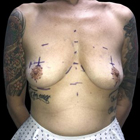If you’re thinking about tummy tuck surgery, you need to remember the ‘surgery’ element. While certain cosmetic procedures require very little downtime, a tummy tuck will. Remember, your core stomach muscles will be got at and tightened up, and it will take time for them to knit and recover. So if you’re looking forward to maintaining, enhancing, and showing off your new look, read this guide…
Immediately after tummy tuck surgery
Complete rest over the first two weeks following surgery is essential: you’ll be undergoing a period called ‘wound healing’. As you’ll be undergoing a degree of discomfort, soreness and fatigue in the first few weeks, you’ll want to avoid the gym, in any case.
However, you will be expected to get active within the first 24 hours after treatment. Nothing too strenuous – walking around the block (or even just the house) will suffice. You may find yourself bending forward to avoid further discomfort: that’s an entirely natural response. You are strongly advised to avoid heavy lifting, intense cardio, and anything which will put pressure on your abs during this period.
Exercising a month after tummy tuck surgery
After four to six weeks, the vast majority of the soreness and fatigue will have disappeared – but there’s still a way to go before returning to the gym. Even if you were an intense gym-user, you will be encouraged to ease your way back in with mid-level activities such as yoga, jogging, swimming and cycling. Again, it’s vital you avoid heavy lifting and abdominal exercises.
Three months after surgery
After twelve weeks, your core stomach muscles will finally be ready to take on the demands of heavy exercise. Start those exercises gradually and listen to your body at all times, gradually rebuilding your endurance levels to ensure that you can transition back to your pre-surgery exercise levels as smoothly – and safely – as possible.















